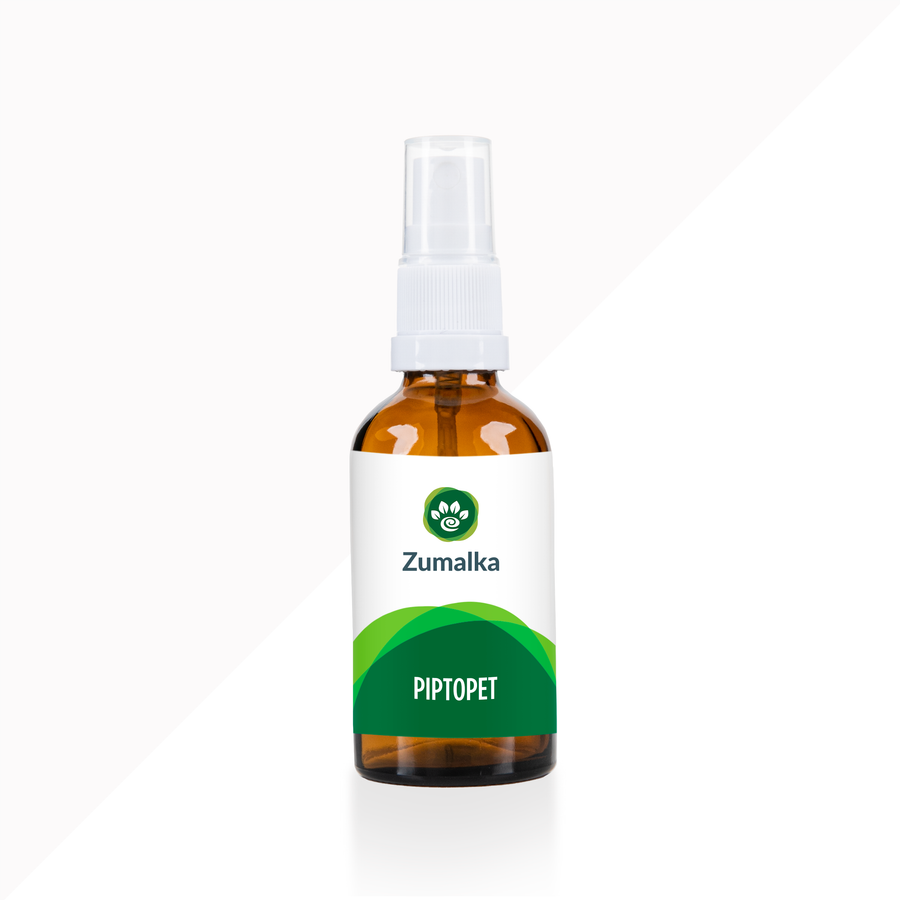Treat Ringworm in Cats Naturally: 11 Effective Foods
Ringworm is one of the most common skin health problems in cats. Although not life-threatening, a ringworm infection can be very uncomfortable for your pet and significantly reduce its quality of life.
I've put together this blog post to guide you through natural ways to deal with ringworm in cats. Interestingly, you can find several effective ringworm treatment options right in your kitchen or pantry.
What Exactly is Ringworm in Cats?

Interestingly, the term "ringworm in cats" is a misnomer. Technically referred to as dermatophytosis, ringworm infections are caused by fungi called dermatophytes, which invade a cat's skin, hair, and nails. Despite the name, it has nothing to do with worms.
As emphasized earlier, while this fungal infection is not fatal, an infected cat will experience severe bouts of itching and soreness if not properly cared for. This physical discomfort, coupled with the relentless itching, can significantly increase your pet's stress and anxiety levels as well.
Apart from cats, dermatophyte fungal spores can also infect other animals such as dogs, hamsters, rabbits, guinea pigs, horses, and cows, among others. To make matters even more alarming, humans are also susceptible to ringworm.
Which Cats Typically Develop Ringworm?
While all cats are at risk of ringworm, very young kittens, cats with compromised immune systems, and long-haired breeds like the American Bobtail, Balinese, LaPerm, Maine Coon, and Persian are the most vulnerable.
Factors that can increase the likelihood of this fungal infection include environmental contamination, skin trauma, and high humidity and temperature.
Interestingly, poor nutrition is also a factor in ringworm in cats. As an experienced pet homeopath, I'll discuss some tasty and nutritious foods that can help alleviate this skin problem as we go along.
How Can I Tell If My Cat Has Ringworm?
There are several key indicators of ringworm in cats. Below are the clinical signs to watch for regarding this skin health issue:
- Dandruff
- Scaly and crusty skin
- Brittle or broken pet hair
- Hair loss
- Skin lesions in and around the infected areas
- Excessive itching and scratching
- Brittle or misshapen nails
While signs of ringworm may be obvious in some felines, they can be hard to spot in long-haired cats. In addition to their ability to hide pain and discomfort, an infected cat often requires a thorough examination to confirm the presence of ringworm.
How Do Veterinarians Diagnose Ringworm in Cats?
Diagnosing ringworm in cats often starts with a thorough physical examination. During this examination, veterinarians may use a special tool called a Wood's Lamp, which emits ultraviolet light. This lamp helps in identifying the presence of ringworm fungus by making it "glow," thereby providing a quick and non-invasive diagnostic method.
Other diagnostic tests in veterinary medicine include examining skin scrapings under a microscope to detect ringworm.
Additionally, a fungal culture can be performed using samples from the cat's fur and nails. In some cases, a skin biopsy may be necessary to confirm the presence of ringworm.
Is Ringworm Infection in Cats Contagious?

The short answer is yes.
Ringworm in cats is highly contagious. Fungal spores from infected animals can remain active for up to two weeks, even during treatment. This prolonged viability of spores is why ringworm often persists in contaminated environments.
While this may have been mentioned earlier, it is crucial to note that ringworm can be transmitted from infected cats to other pets and humans. As a zoonotic disease, ringworm spreads from animals to humans.
Is There a Way to Treat Ringworm in Cats Naturally?
While most cat parents will often immediately resort to conventional anti-fungal drugs and topical therapy when it comes to ringworm, there are actually natural options that you can go for to deal with this health issue.
In this part of our discussion, we will explore tasty foods that can help your pet fight feline ringworm.
#1. Apple cider vinegar
Research shows that apple cider vinegar (ACV) has potent anti-fungal properties that can help eradicate certain health problems, such as denture stomatitis. Interestingly, it can also be used as a topical treatment for ringworm in cats, similar to an anti-fungal shampoo.
Think of it as a more natural and safer alternative to conventional chlorine bleach solutions for treating infections in cats.
Mix equal parts of water and ACV and apply it to the affected areas with a clean cloth at least twice a day. Always remember to dilute ACV, as using it undiluted can cause stinging sensations in infected cats.
#2. Cabbage
A recent study reveals that cabbage contains specific proteins and compounds that can combat various pathogens, including fungal spores.
Notably, these components were found to impede the growth and development of fungi such as Fusarium oxysporum and Mycosphaerella arachidicola, suggesting potential applications in agricultural and medical fields.
To support your cat during a ringworm infection using cabbage, begin by boiling a few fresh cabbage leaves until they are significantly wilted.
Once wilted, blend the leaves into a chunky mixture. After blending, strain the mixture to extract the juice. This juice can then be applied as a topical solution to the affected areas.
#3. Coconut oil
Research indicates that coconut oil contains capric acid and lauric acid, which disrupt the membranes of infectious fungal spores. Studies have shown that coconut oil is an effective treatment against the Candida species of fungi.
To support your cat in treating ringworm with coconut oil, you can either apply it topically to the affected areas or integrate it into your cat’s diet. If you choose the latter option, ensure you use food-grade virgin coconut oil.
#4. Echinacea
A study shows that extracts derived from echinacea were found to contain a derivative called echinacoside, which helps speed up healing of wounds and keep inflammation at bay.
To use echinacea in supporting your cat during ringworm, steep a teaspoon of dried echinacea roots in two cups of water for at least ten minutes until the liquid takes on an amber color. Allow the mixture to cool down completely.
You can use this echinacea tea externally as a bathing liquid to wash the affected areas.
#5. Ginger
Experts discovered that ginger contains abundant amounts of monoterpenoids and sesquiterpenoids, which can prevent the proliferation of fungi like Trichophyton mentagrophytes, a known cause of ringworm.
To use ginger in supporting your cat during ringworm, boil a thumb-sized piece in three cups of water for at least ten minutes or until the liquid has become very aromatic. Allow the mixture to completely cool down. You can now use this as a bathing or washing liquid for your cat.
#6. Honey
Research reveals that honey can stave off certain fungal pathogens, including Candida species, Rhodotorula species, and Cryptococcus neoformans.
To support your cat during ringworm, you can use honey due to its natural antifungal properties. Dilute two teaspoons of honey with a bit of water until it reaches an almost runny consistency. Apply this mixture as a topical ointment on the affected areas.
#7. Lemongrass
According to researchers, lemongrass contains oils and compounds that are potent against fungi, specifically Candida species, which can cause infections such as ringworm.
To use lemongrass in supporting your cat during a ringworm infection, pound the fleshy parts of the stalk until liquid is extracted. Collect the liquid and gently apply it to the affected areas.
As an alternative approach, you can use a blender to extract the liquid from lemongrass. After blending, strain the mixture to separate the juice from the pulp, and use only the juice.
#8. Licorice root
A study reports that licorice root contains flavonoids, which can impede the growth and development of certain disease-causing fungi, including Arthrinium sacchari, Chaetomium funicola, and Candida albicans.
To support your cat during a ringworm infection, steep a teaspoon of licorice root in a cup of hot water for at least ten minutes. Once the mixture cools down completely, use it as a bathing or washing liquid for your pet. Ensure the liquid is at a safe, lukewarm temperature before applying it to your cat.
#9. Pineapple
Research shows that the skin of pineapples contains various compounds, including saponins, phenolics, and flavonoids. These compounds act as natural barriers against the fungal spores of Trichophyton mentagrophytes, a common cause of skin infections.
Boil about a handful of pineapple skin in a cup of water for at least five minutes, or until the fibers start to break up. Once the mixture cools down completely, it can be used as a bathing or washing liquid for your pet.
#10. Pumpkin seeds
Research has discovered that pumpkin seeds contain a protein called PR-2, which possesses potent antifungal properties. This protein has been shown to protect against a range of harmful fungi, including Botrytis cinerea and Colletotrichum coccodes.
To support your cat during a ringworm infection, roast pumpkin seeds at 350°F for 45 minutes to an hour. Collect the seeds by pinching the hulls to crack them open. Mix no more than three seeds into your cat’s meals per day.
#11. Turmeric
A recent study has shown that compounds in turmeric can effectively block infectious fungi, including Candida albicans, Trichophyton rubrum, and Microsporum gypseum.
To support your cat during a ringworm infection, mash a thumb-sized piece of turmeric in a mortar and pestle until it forms a pulp. Collect the juice and apply it as a topical ointment to the affected areas. Be careful to avoid getting any turmeric juice in your cat’s eyes, as it can cause irritation.
A Natural Product That Will Help Your Cat's Skin Stay Healthy
Boosting your cat's immune system while protecting it against ringworm is crucial. Zumalka's SKIN SUPPORT is specifically designed to enhance skin cell regeneration and promote the formation of connective tissues. SKIN SUPPORT also helps alleviate skin rash, itching, eczema, dry skin, skin irritations, ulcers, and other similar health problems.
Conclusion
When it comes to skin issues in cats, ringworm is definitely not something you should overlook. We here at Zumalka are always ready to help you keep your pet as healthy and happy as can be. Please do share your questions and insights in the comments section.







Leave a comment